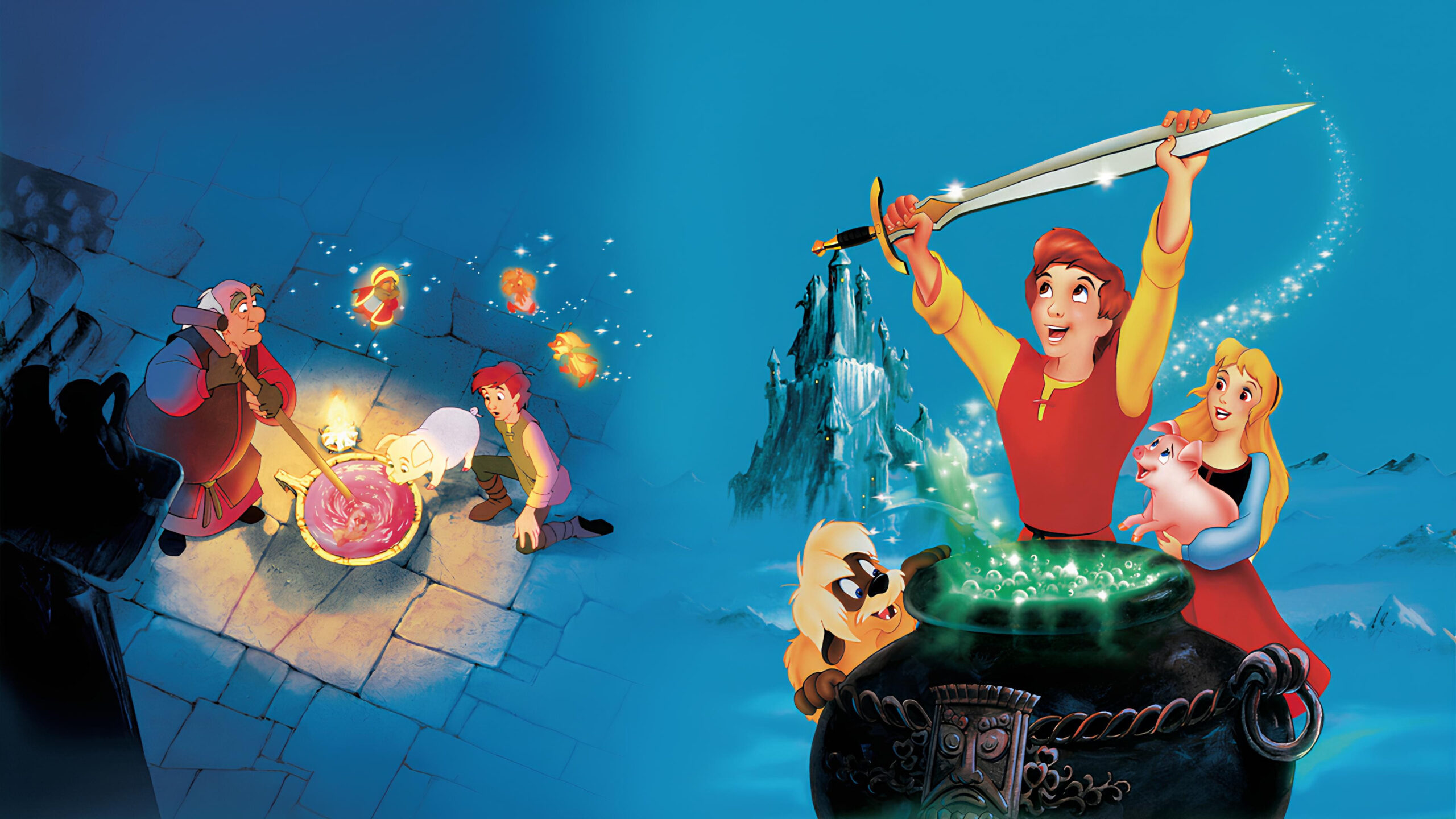
By Trent Lakey
The Black Cauldron, directed by Ted Berman and Richard Rich, is primarily remembered (if remembered at all) as the film that nearly ruined Disney’s animation department in the mid-1980s. It was a notorious box-office bomb that resembled the style of beloved Disney classics but eschewed their narrative model of romantic fairy tales filled with musical numbers in favor of a darker tale of adventure and magic. The film rode the thin line between children’s story and teenage fantasy, which sadly prevented it from finding an audience during its theatrical run. But as a cinematic artifact from the heart of the ’80s and a forgotten seed of the Disney canon, it deserves to be viewed and appraised on its own terms, detached from everything surrounding it.
The story follows a young assistant pig keeper, Taran, who dreams of becoming a great warrior in a distant land of magic and demons. He is entrusted with protecting a pig, Hen Wren, who has the capacity for visionary prophecies and is being hunted by the Horned King. This malevolent ruler is searching for the Black Cauldron, which will grant him a deathless army of skeletal demons. It is sufficient to say that this story requires a valiant warrior and our hero Taran is thrust into the oft-desired shoes. His journey catapults him into a perilous world of deceiving witches, talking canines and imprisoned princesses. It is a traditional hero’s journey, but rendered through elegantly bewitching animation that is equally transporting and visceral. This is a Disney film infected by the Hollywood of Lucas and Spielberg — more Star Wars than Snow White.
The film’s tumultuous journey to the silver screen began during its post-production in 1984. When newly installed Disney Chairman Jeffrey Katzenberg saw the film, he was shocked by its graphic imagery and dark mood and immediately requested it be tamed for Disney’s audience. The filmmakers obliged Katzenberg and toned the film down to be more palatable for younger viewers. If not for this, The Black Cauldron would likely have been the first Disney animated film to receive a PG-13 rating (it was ultimately rated PG).
Glimpses of a darker film are in the released cut, which raises the question of what the film could have looked like if it weren’t for the fear of turning off a wider audience. The film lost that wide audience anyway, perhaps by straying too far from the familiar formula of the time. It felt both too different (from the Disney standard) and not different enough (from every other standard). It is a fascinating artifact for what it is and what it isn’t. Regardless, it is a charming and winning film.
The Black Cauldron is the manifestation of a studio at a crossroads. It followed the legacy of the famous Disney classics and anticipated Disney’s renaissance in the late ’80s and ’90s. Perhaps it was necessary for a casualty to fall before Disney reclaimed its throne. But The Black Cauldron is more than a casualty.
See for yourself: The Black Cauldron will screen July 12–17 as part of IPH’s popular Summer of ’85 series.
